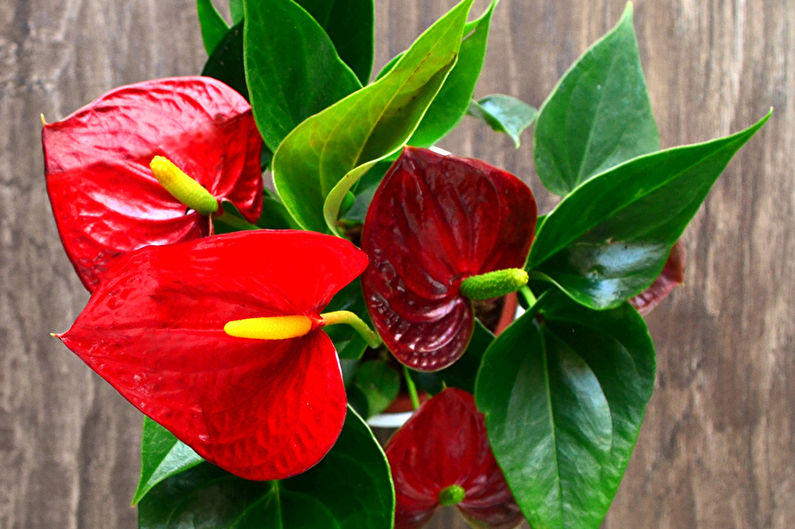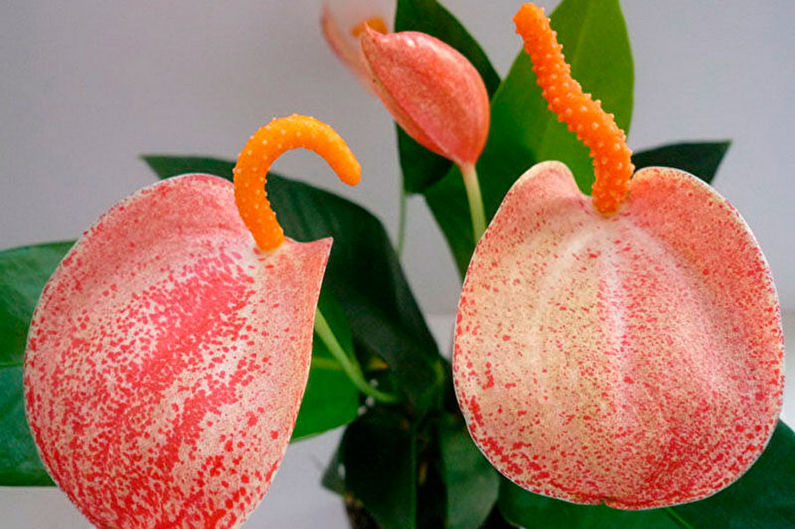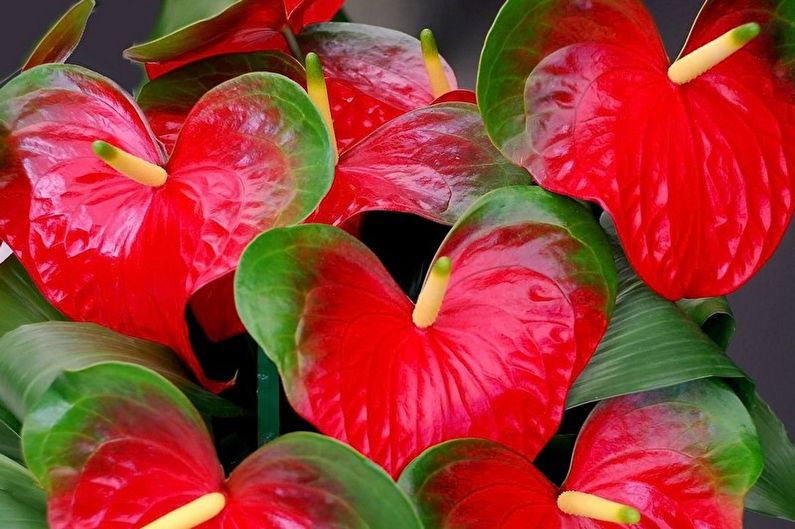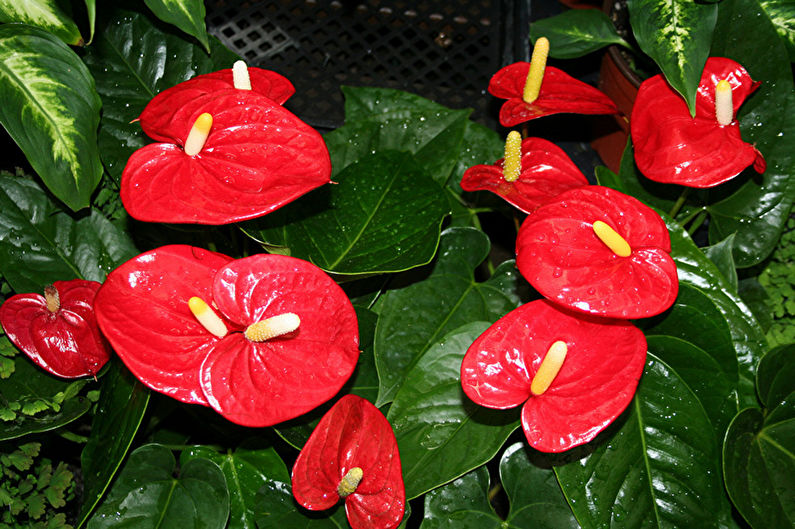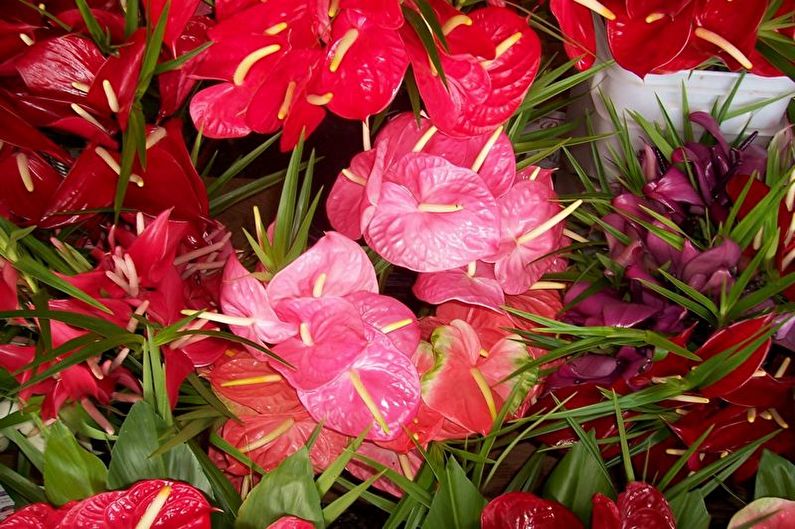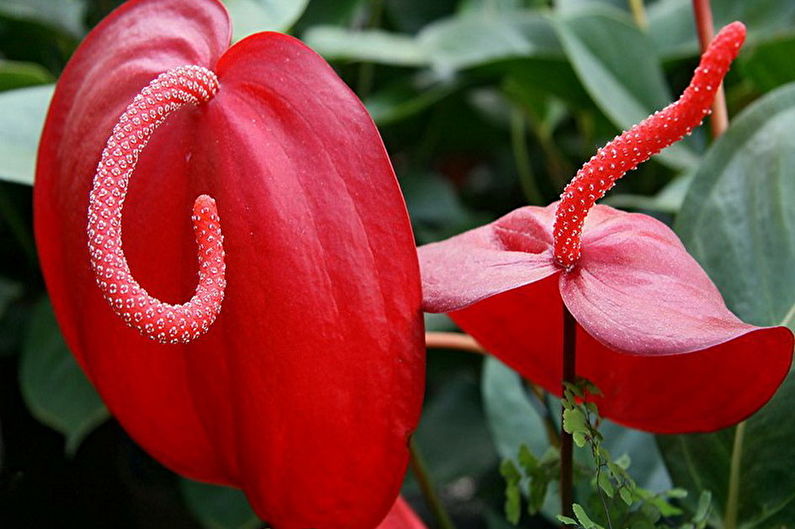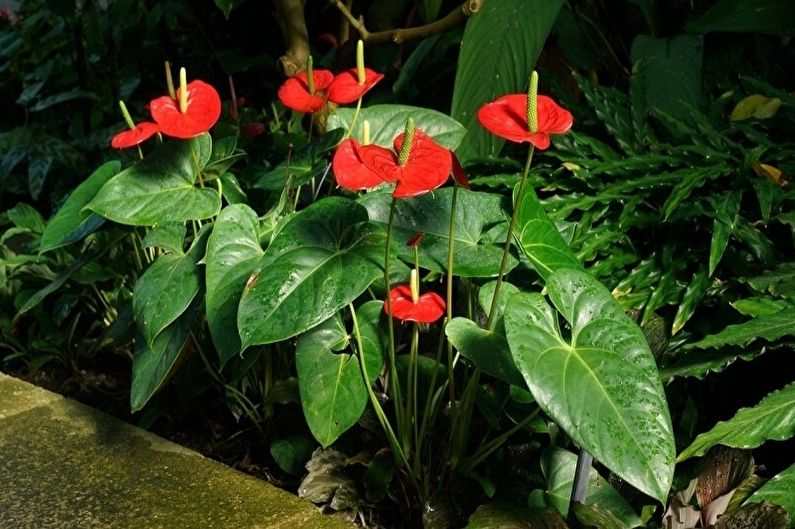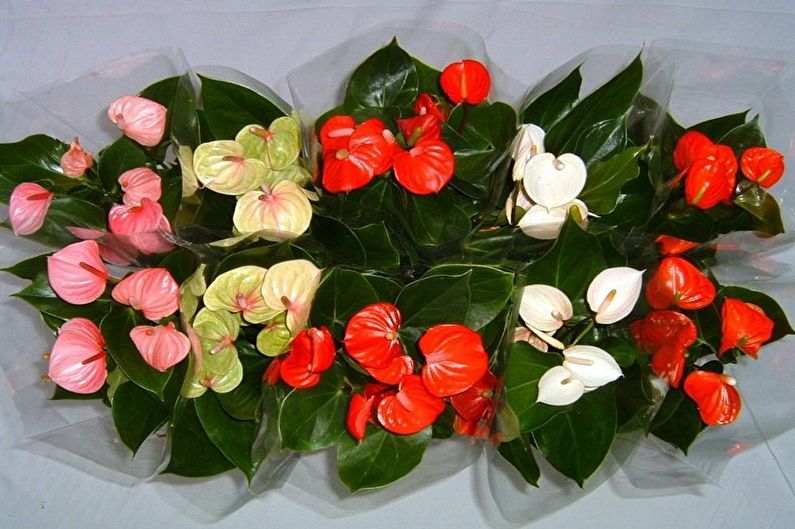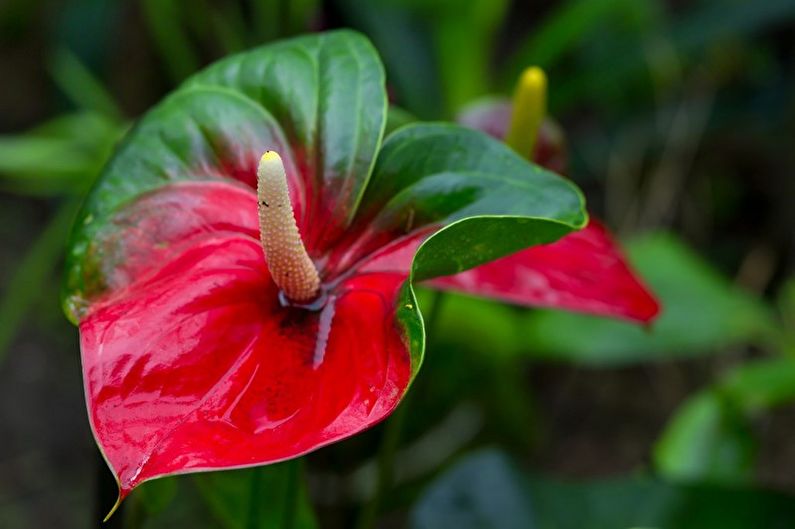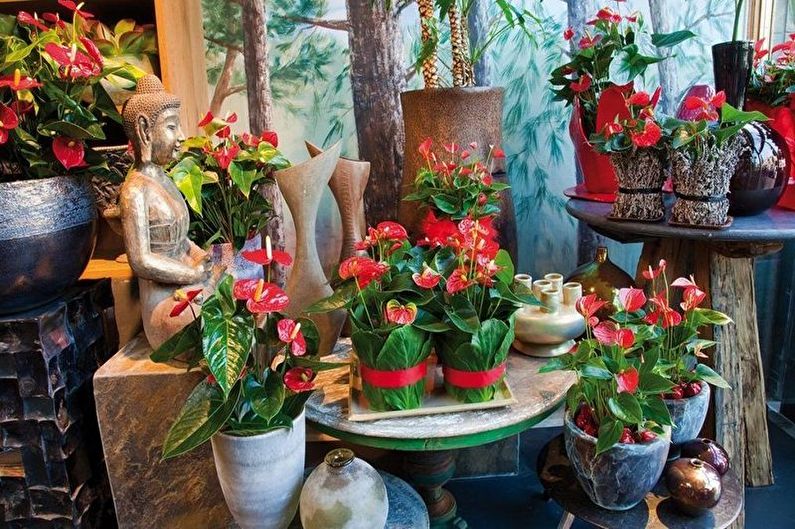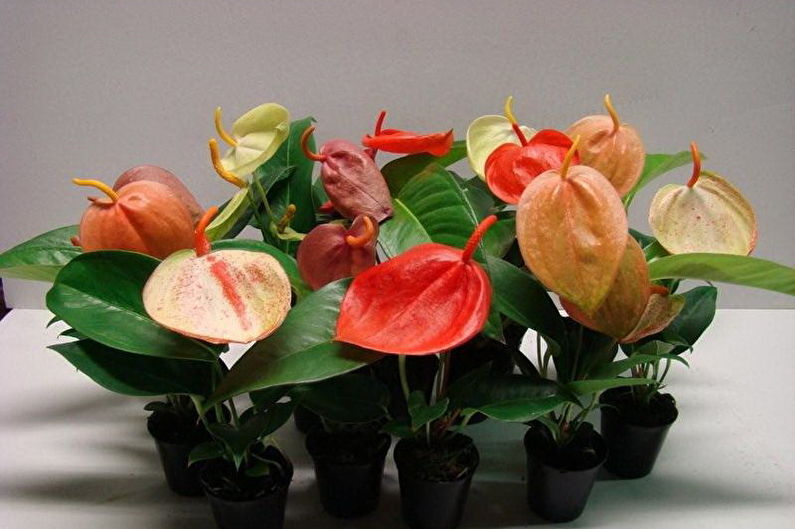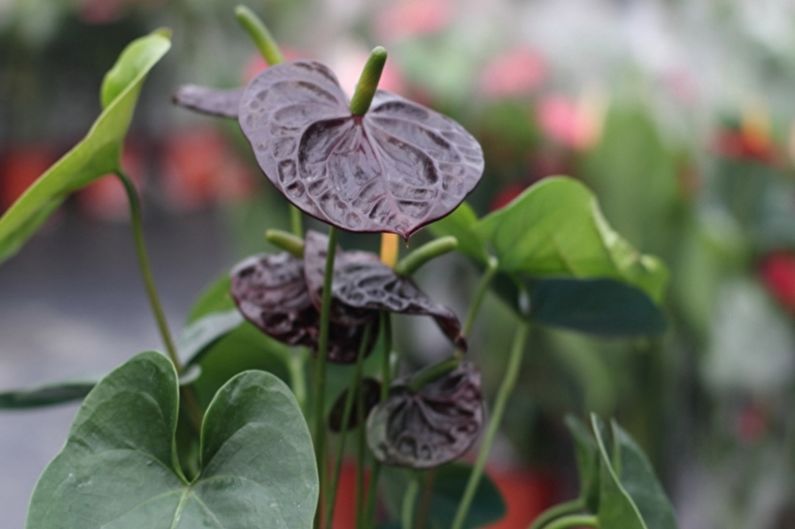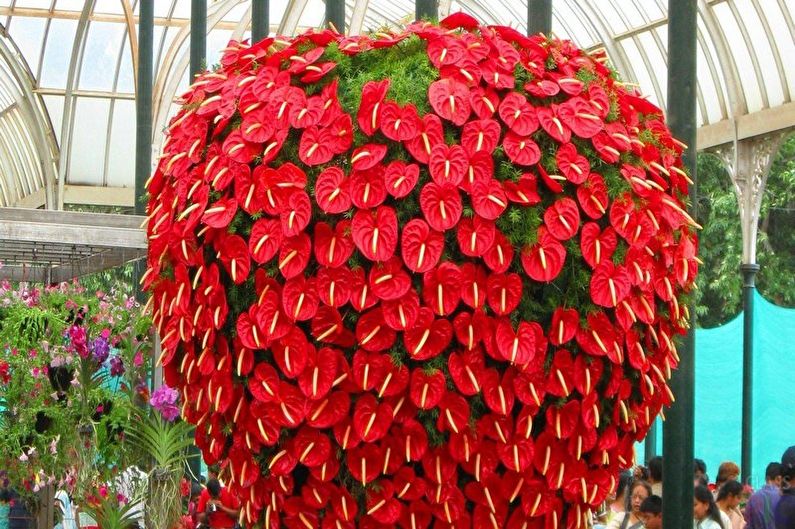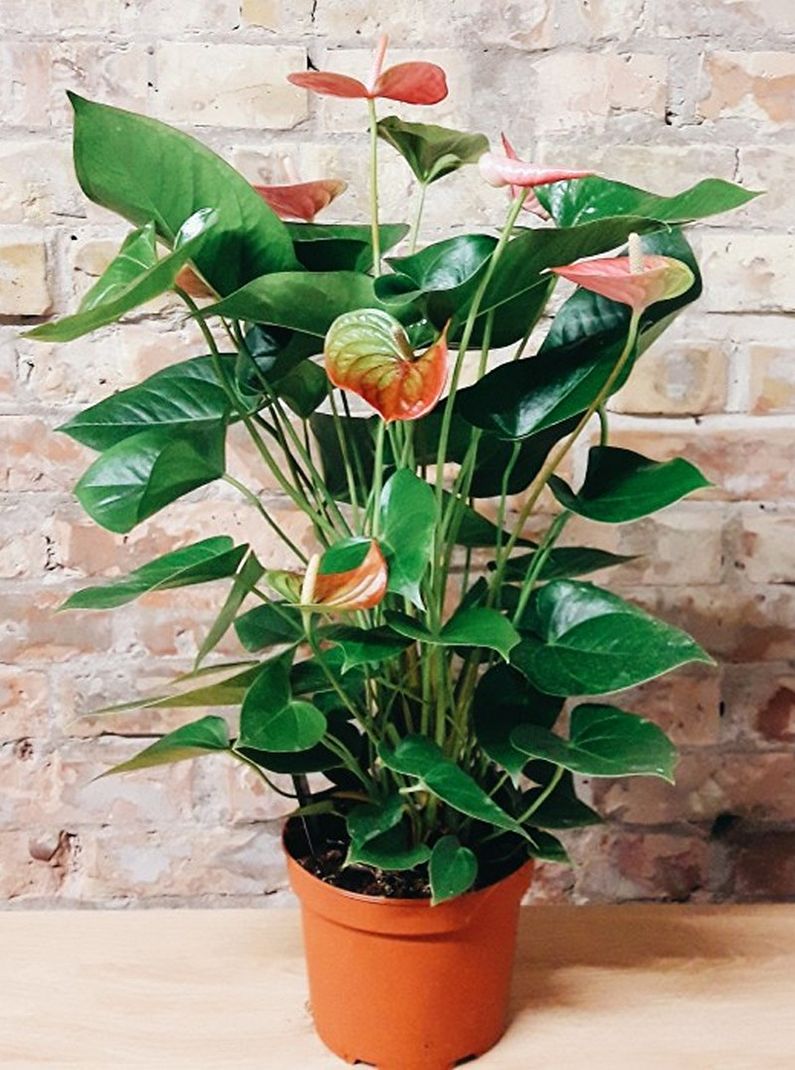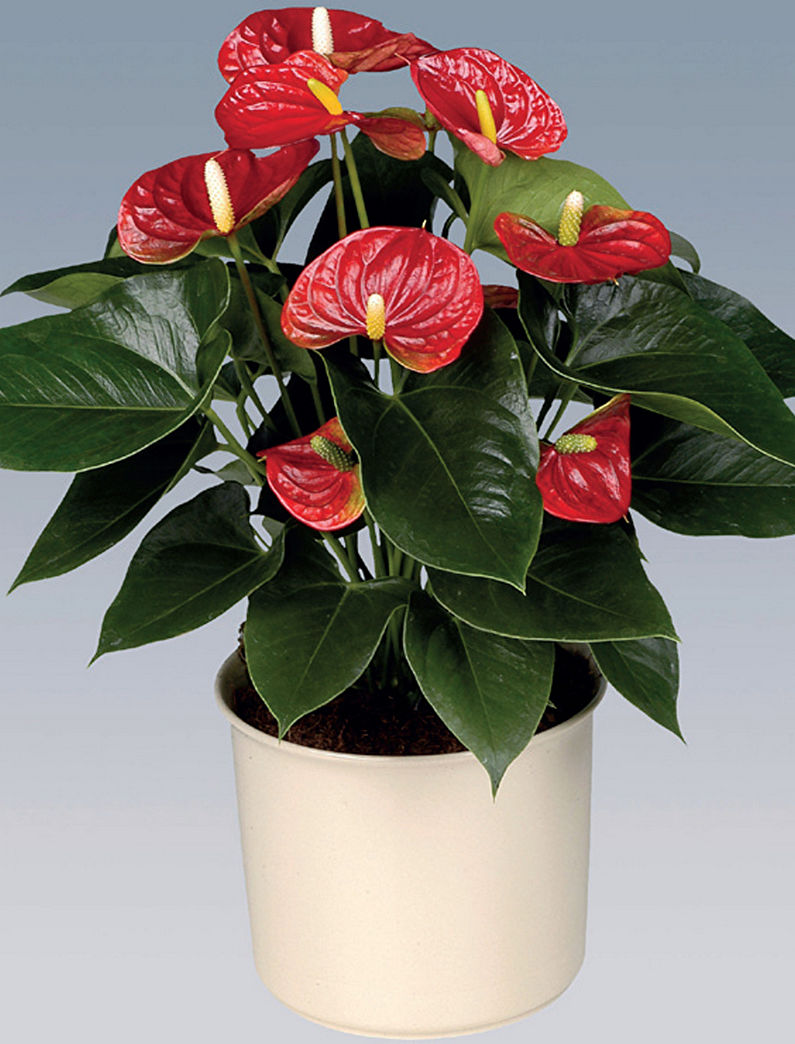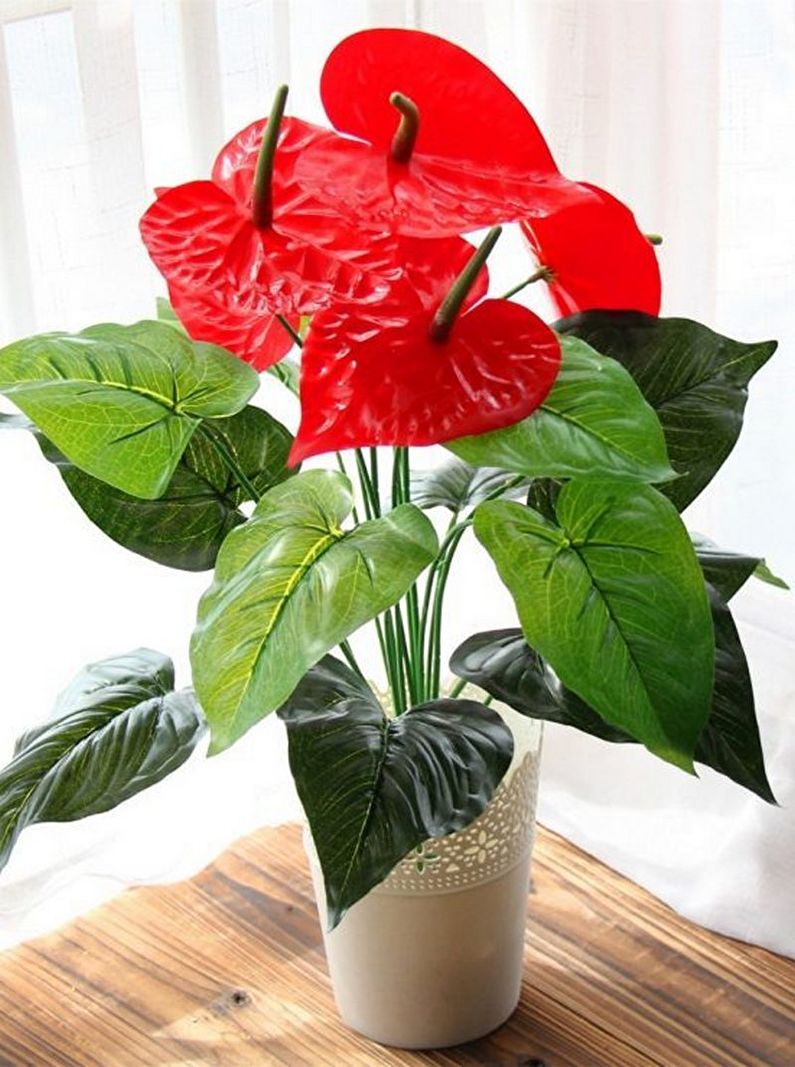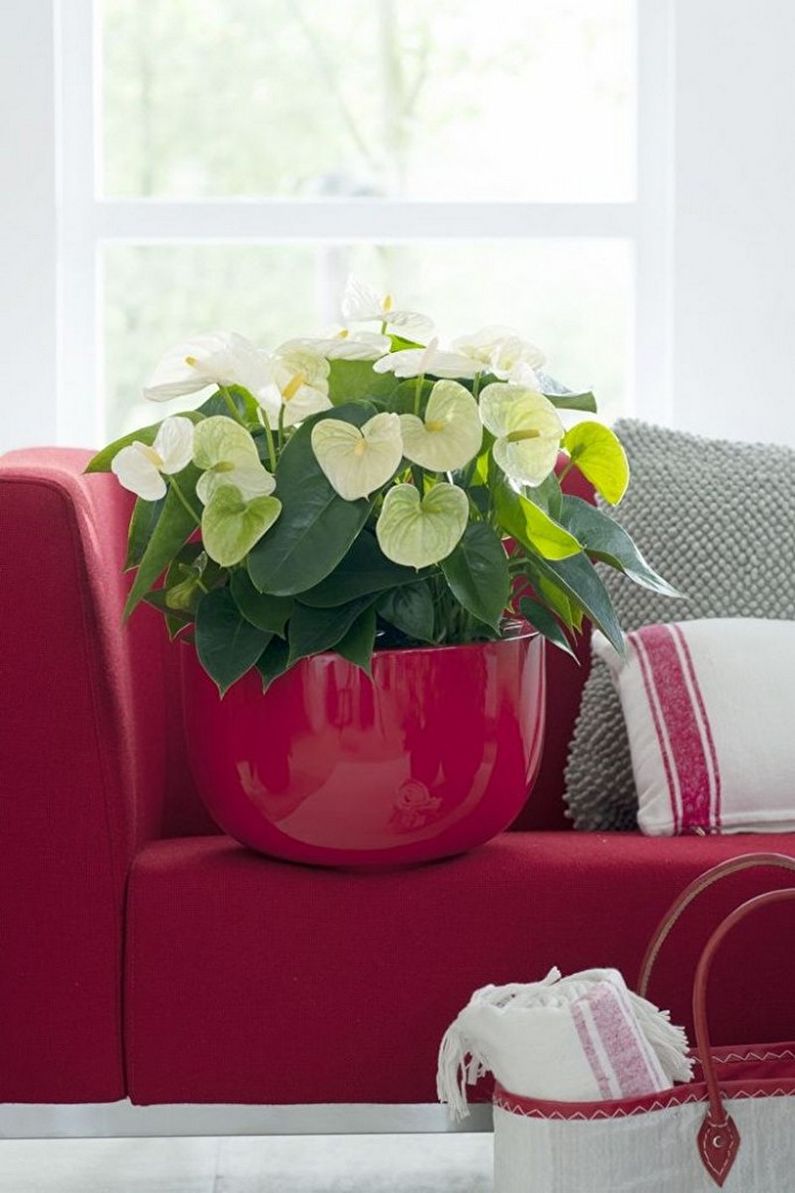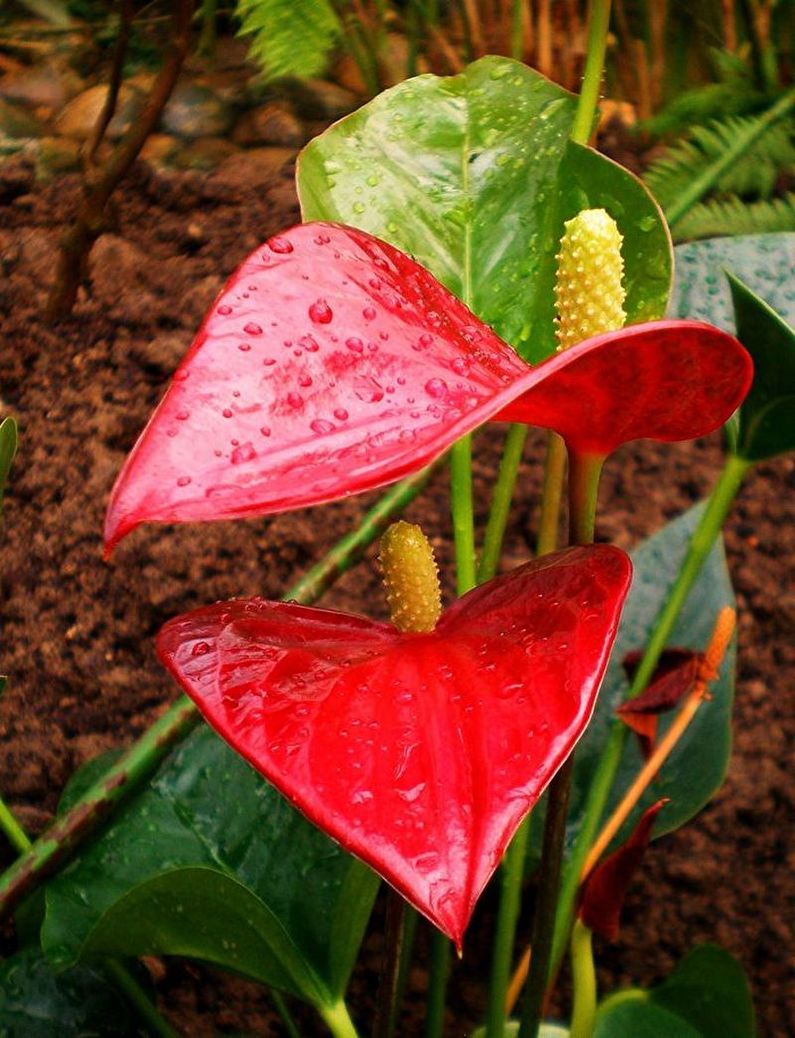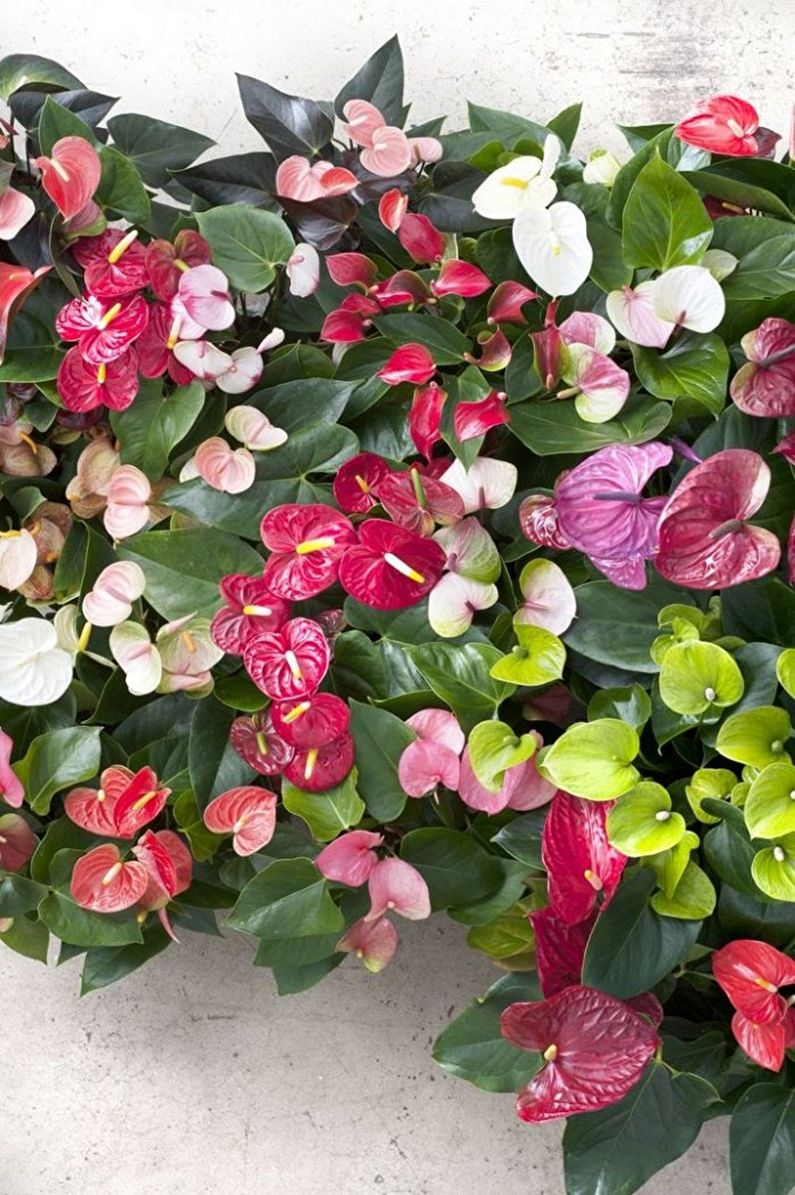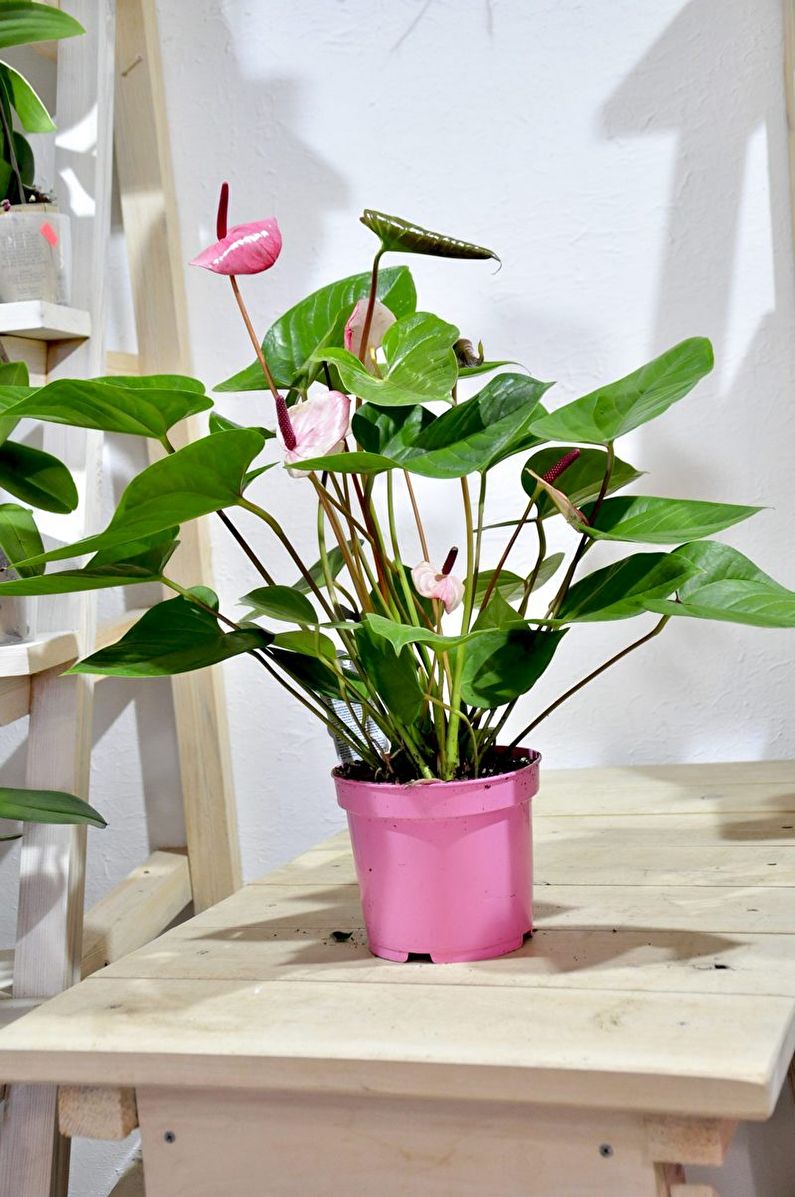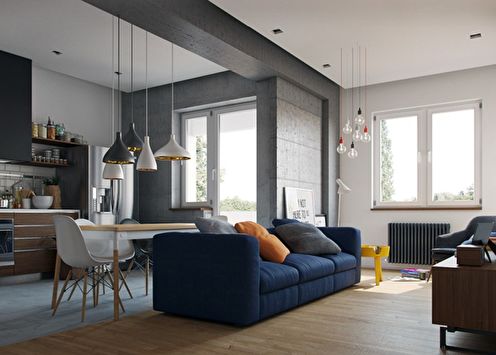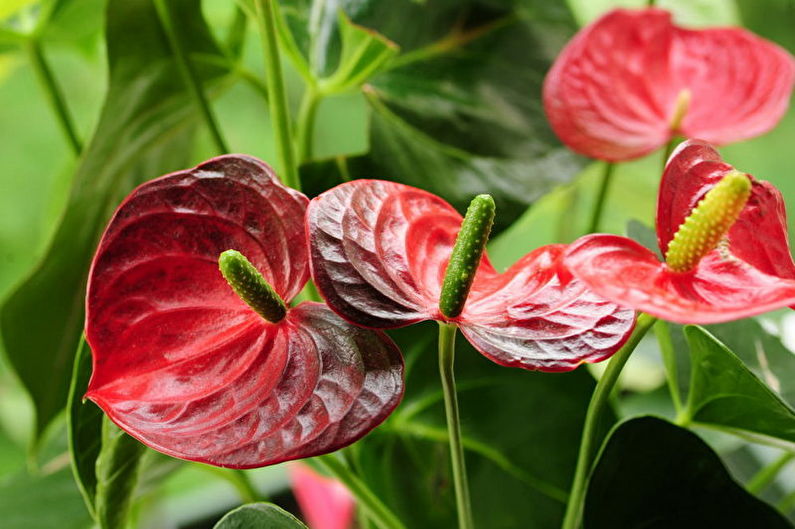
Anthurium is an excellent home-grown exotic plant. Its main advantage is the rich color palette of buds, from bright red to snow-white, including lilac, burgundy, pink tones. There are also varieties with colorful and black bracts. This interesting plant has other names, for example, “flamingo flower”, “fiery tongue”. Sometimes it is called "masculine happiness", because, according to legend, it brings courage, determination, masculinity to the stronger sex.
The main types of anthurium
Anthurium is a decorative deciduous plant, native to the tropical forests of the New World, where it grows in the form of terrestrial herbs and vines. This culture has about 700 species, but 30 pure species and about a hundred hybrids are used for sowing. The classification consists of three main groups:
1. Beautifully flowering - are very popular among flower growers, as they have an inflorescence of unique beauty. A special place here is occupied by such varieties as “Anthurium Scherzer” and “Andre”. The first pleases with its red-orange flowering, dark green matte leaves with black splashes. “Andre” reaches a height of 1 meter, has an extensive palette of petals from white to crimson-red tones.
2. Species with a short climbing trunk, such as Crystal Anthurium and Majestic Anthurium. It is noteworthy that these plants also have graceful color patterns on the leaves. For example, the “Crystal” type foliage has a velvety coating of a deep green tone with light veins and stunning luster. Similar to it is the “Majestic”, whose leaf diameter can reach 40 cm with proper care.
3. Decorative and deciduous, the representative of which in home pots is Anthurium Baker. The lower surface of its leaves has a reddish-brown pubescence, and they themselves reach 55 cm in length. The “Anthurium climbing” species, which looks more like a liana up to 1 m in length, also stands out in this group.
There are many other quite interesting varieties, each of which perfectly complements the home interior. But, it should be noted that only the creation of favorable conditions will help to achieve bright colors and beautiful flowering of culture.
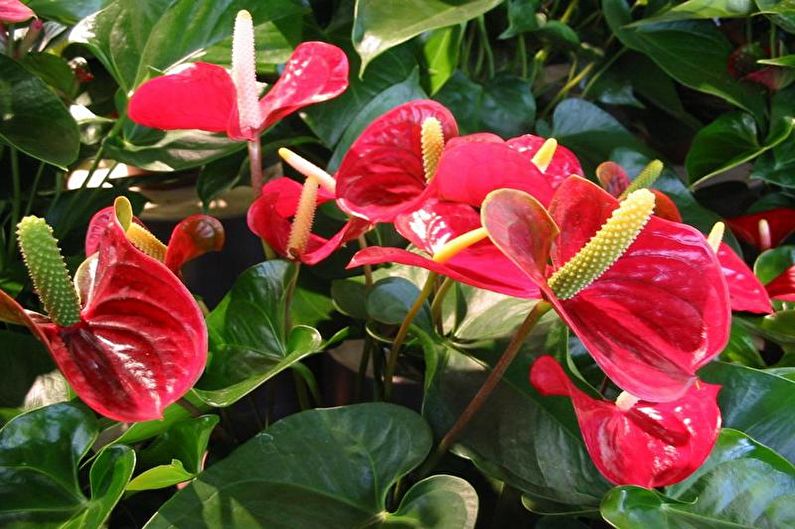
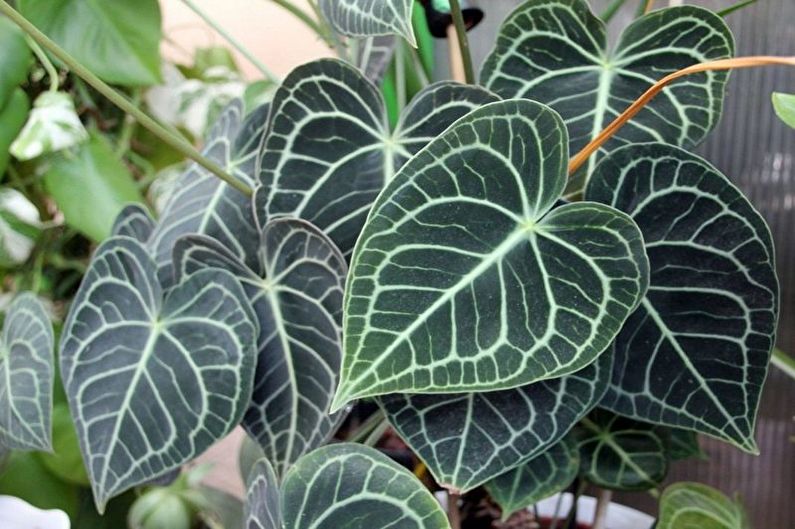
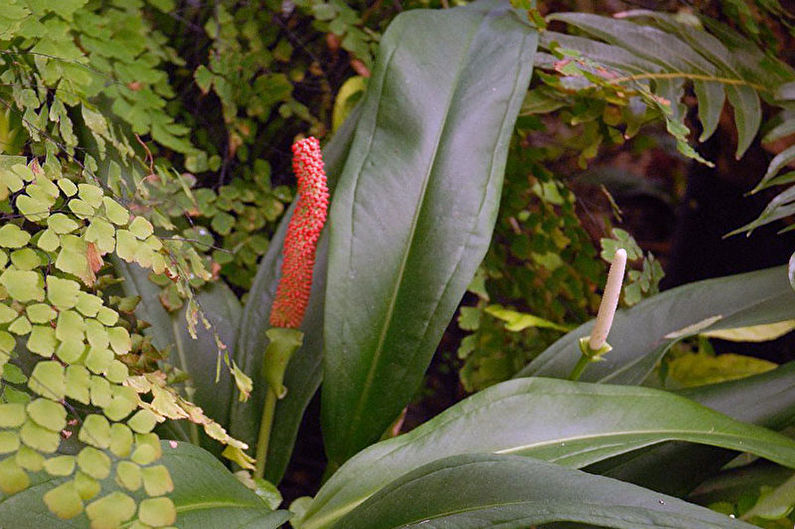
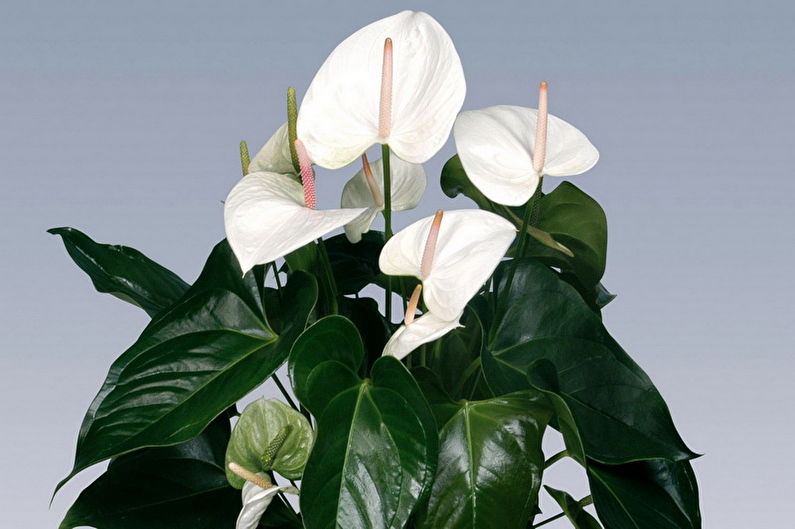
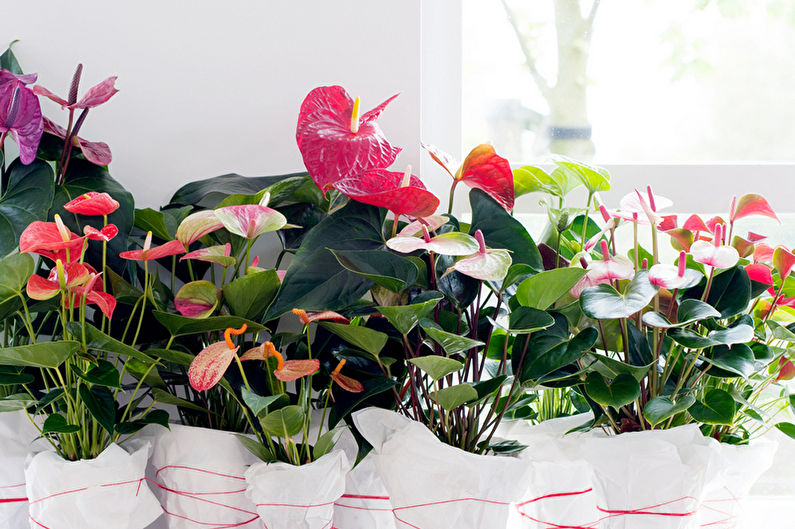
Proper Anthurium Care
Anthurium is a beautiful houseplant. Originally from the tropics, it is quite demanding of external conditions. With proper care, the culture will delight its owners with bright flowering all year round, even when the street is gloomy and cold. The main components of a favorable microclimate are optimal humidity, temperature, lighting, as well as timely soil drink with additional top dressing.
Lighting
What can destroy anthurium is direct sunlight. At the same time, he needs bright, but diffused lighting. You can create a slight penumbra, as in a very darkened space, growth and flowering activity will slow down. In winter, you need to equip its location with additional electric lighting.
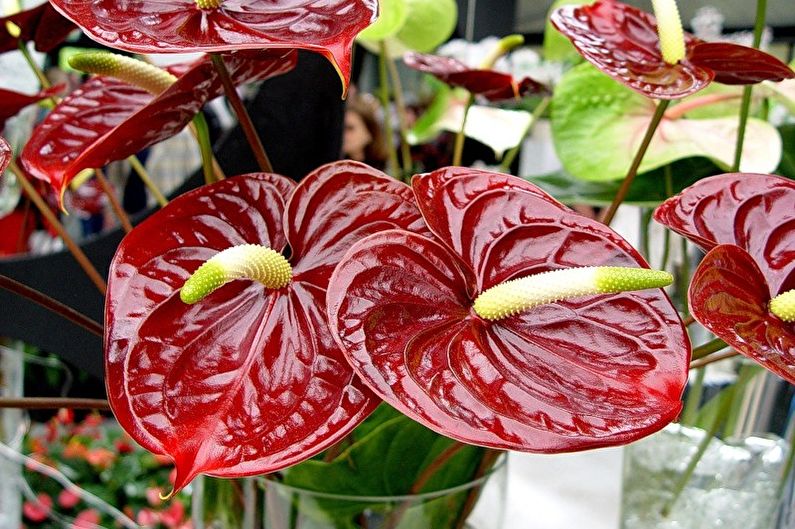
Temperature
Anthurium perfectly adapts to room temperature. He does not need to create additional heating or keep in the cold. In summer, the optimum temperature will be in the range + 20 ... + 28С, and in winter - from 15 to 18С. When the heating season begins, the anthurium must be removed from the radiators, which significantly dry the air. You must also take into account that sudden changes in temperature can destroy the flower.
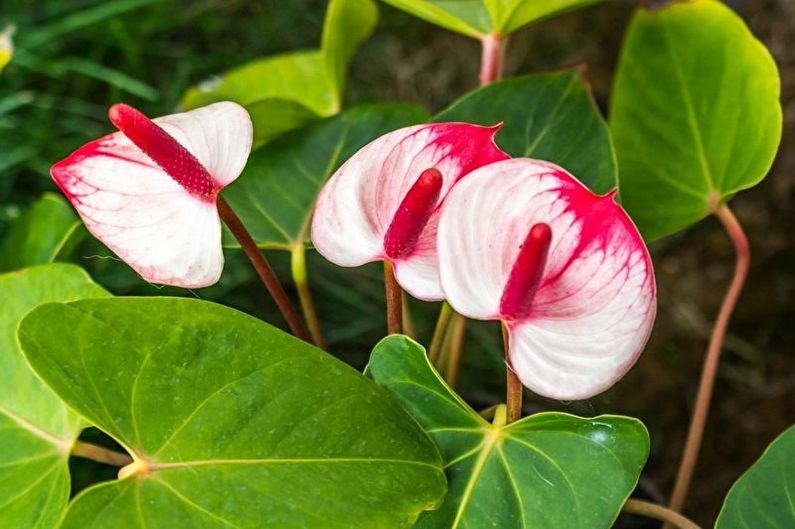
Humidity
Since the birthplace of Anthurium is humid forest tropics, it is necessary to create a similar microclimate in the apartment, with which humidifiers can successfully cope.To avoid the negative effects of dry air, the flowerpot can be placed on a pallet with wet expanded clay, periodically spraying air around the flower. In this case, you must ensure that drops of water do not fall on the leaves. This can lead to limescale and loss of attractiveness.
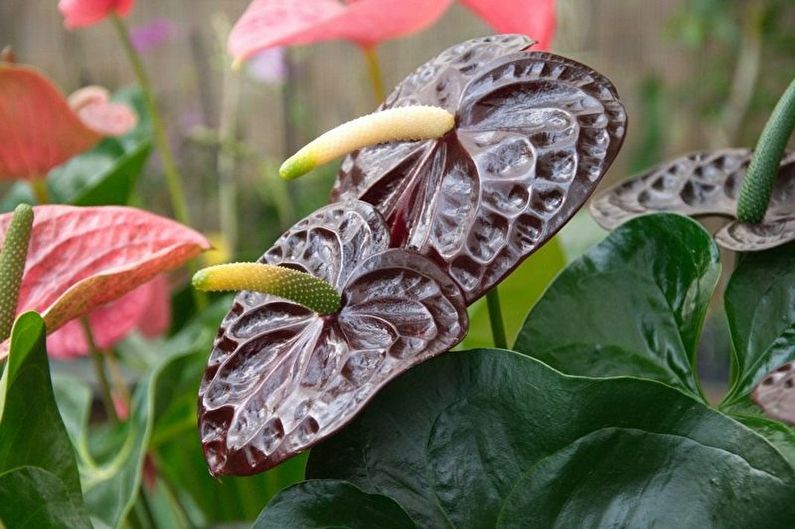
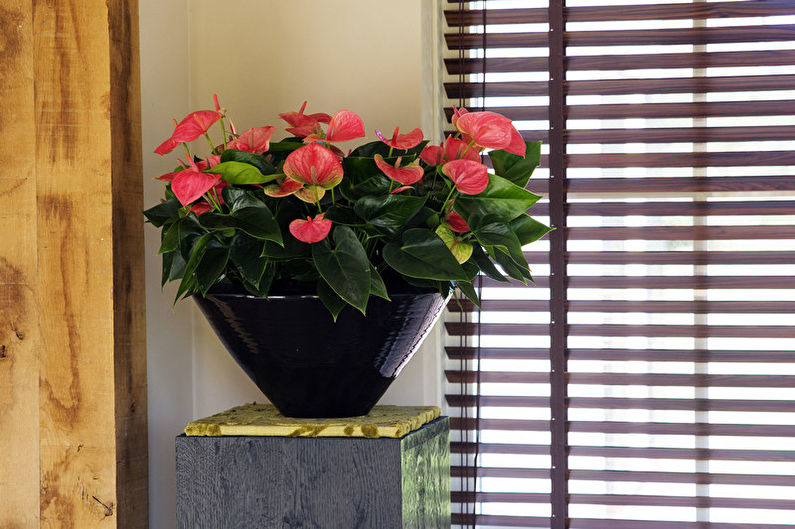
Watering
Anthuriums need good watering, and excess moisture or overdrying of the soil can harm them. If water remains in the sump, get rid of it. The frequency of soil moisture is determined by the dryness of the upper layer. In the hot season, watering is carried out 2-3 times a week, and in winter - 1 time. The flower prefers warm soft water, so it is better to take a standing one. Anthurium leaves may turn yellow from lime water.
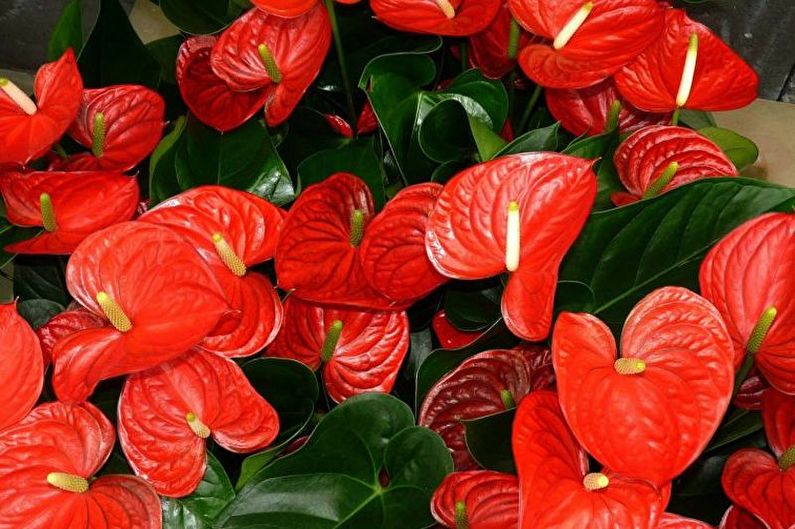
Fertilizers and fertilizing
Some gardeners who provide the plant with the most suitable conditions prefer not to use fertilizers at all. A favorable soil is a mixture of acidic soil with peat, wood bark and expanded clay. But we must take into account that no matter how fertile the soil is, over time the supply of necessary nutrients in it is exhausted.
From the beginning of spring to the end of summer (you can touch on September) twice a month, anthurium must be fed with fertilizers, alternating between organic and mineral, or to acquire a universal composition with a full complex. This is especially important for young plants up to six months that are actively growing. Top dressing begins only when the culture is firmly rooted, so as not to cause a burn of the root system.

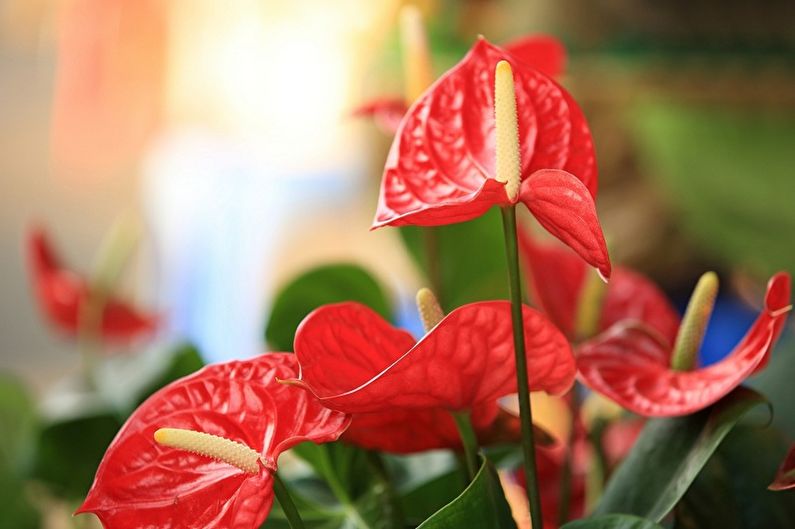
Pests and diseases of anthurium
Proper care is the key to a full healthy life of the plant. If yellowing of the leaves is observed, the reasons may be inappropriate climatic conditions, sunburn or, conversely, freezing, lack of moisture. When the watering is too plentiful, the leaves of the anthurium become covered with brown spots, and if the transplant is not carried out correctly, they blacken and wither. There are also a number of diseases from which the culture can suffer. The most common are:
- Sooty fungus - affects leaves, stems and shoots, reproduction stops, as the plant is not able to produce new shoots. Affected areas must be removed, and the flower treated with potassium soap;
- Soil fungus - formed during transplantation into infected soil and the lack of high-quality drainage. The disease affects the root system. Damaged areas must be removed and transplanted anthurium;
- Gray mold is manifested by a bloom of gray shade throughout the plant. Its appearance may be caused by increased humidity, content in unventilated conditions;
- Powdery rot - formed at high humidity and high temperature. The flower has a white coating, which is cured by fungicidal agents.
Another problem for anthurium is parasite damage. These include thrips, aphids and scale insects. To heal the flower, it is necessary to use insecticidal preparations and carry out mechanical cleaning of the plant. In this case, the diseased instance is isolated for the duration of treatment.
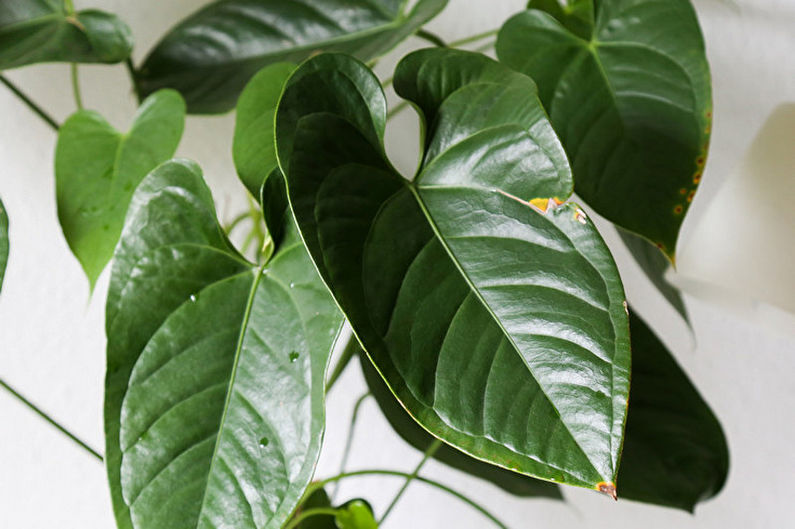
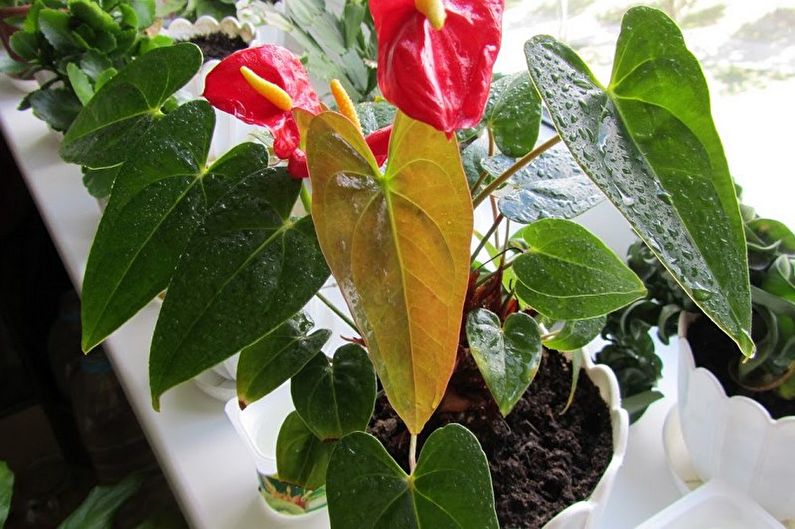

How to transplant anthurium
To achieve good growth and flowering of the culture, anthurium must be constantly transplanted. At the same time, fresh fresh soil is added to the pot. Young flowers are transplanted annually, and adults - every three years. As for the soil, it should be nutritious, light, perfectly pass air. Most often, flower growers use purchased soil.
It is important to choose the right pot - small and narrow promotes lush flowering, and in the large flowerpot “babies” are more often formed. Be sure to put drainage at the bottom. Before you get the anthurium from the pot, you need to water it abundantly so that the moisture well nourishes the entire soil. From the roots of the extracted flower, the remains of the old soil are crushed and transplanted. If the anthurium blooms at this time, it is better to prune the flower stalks so that it is easier for the plant to adapt.
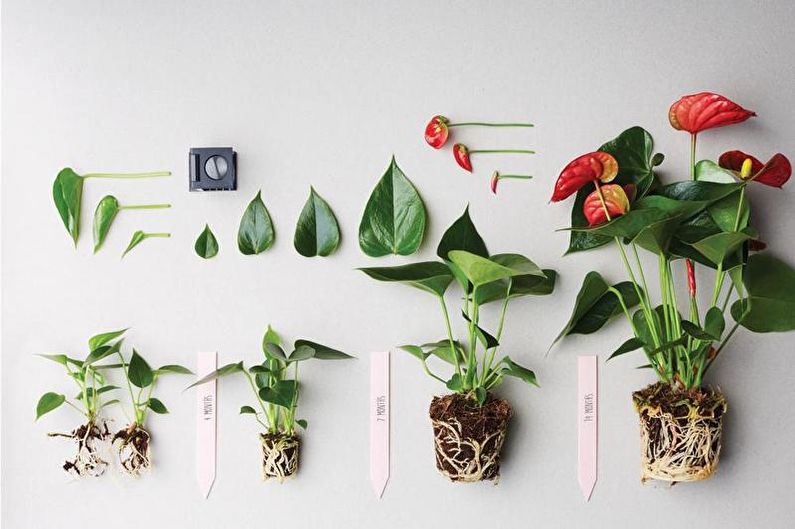

Propagation at home
Most often, vegetative propagation is used by cuttings with aerial roots, whole tops or stem offspring. Can also be propagated by seed.
Vegetative propagation of anthurium
You can plant a plant gradually, with each appearance of young shoots. Each of them must have a pair of leaves and at least as many rhizomes. If the root system is absent, the shoot must be placed in moist sphagnum moss for one to two weeks until the root appears. After cutting the shoot, it is advisable to treat this area in anthurium with crushed coal or ground cinnamon to avoid the possible appearance of rot or the development of a fungal infection.
Young shoots are planted in prepared moist moist soil so that the growth point remains above the soil level. As moisture evaporates, watering is carried out.
In the same way, propagation by root shoots is carried out. With sufficient care, the plant acclimates within a month, after which the first leaves appear.
There are varieties of anthurium that have fairly long climbing shoots. They can be rooted directly in the ground, pinning and sprinkling with moss.
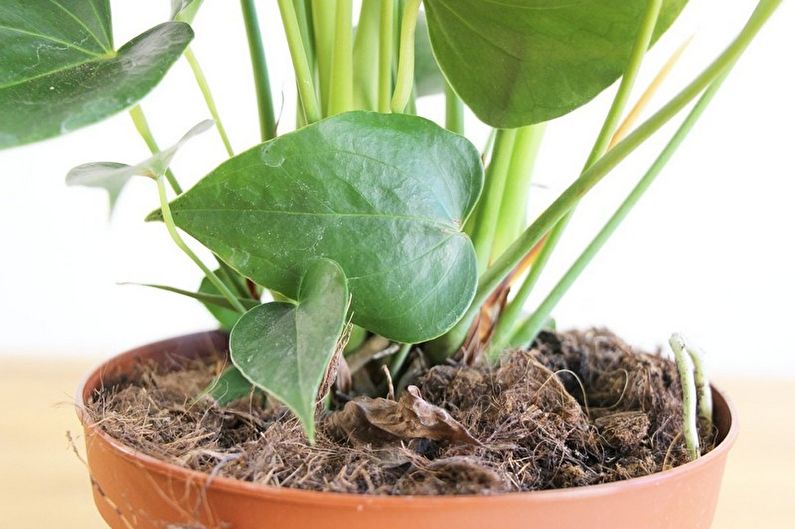
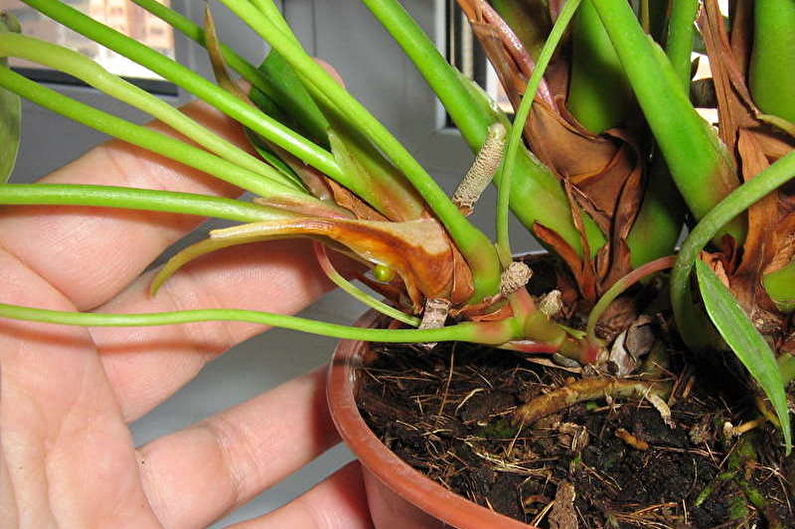
Division
Another way to increase the number of instances of anthurium is simply to split it. An adult bush must be removed from the soil and carefully separate several parts, each of which is placed in a separate pot with soil. The soil must be moistened to accelerate the adaptation of the root system.
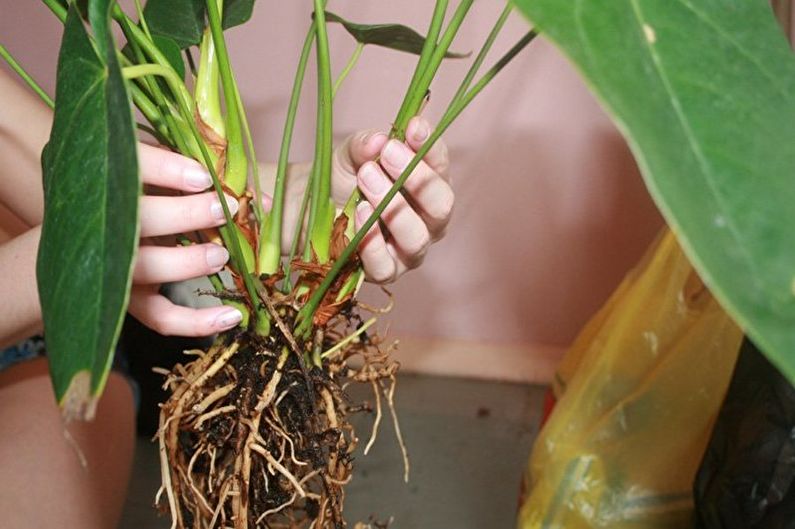
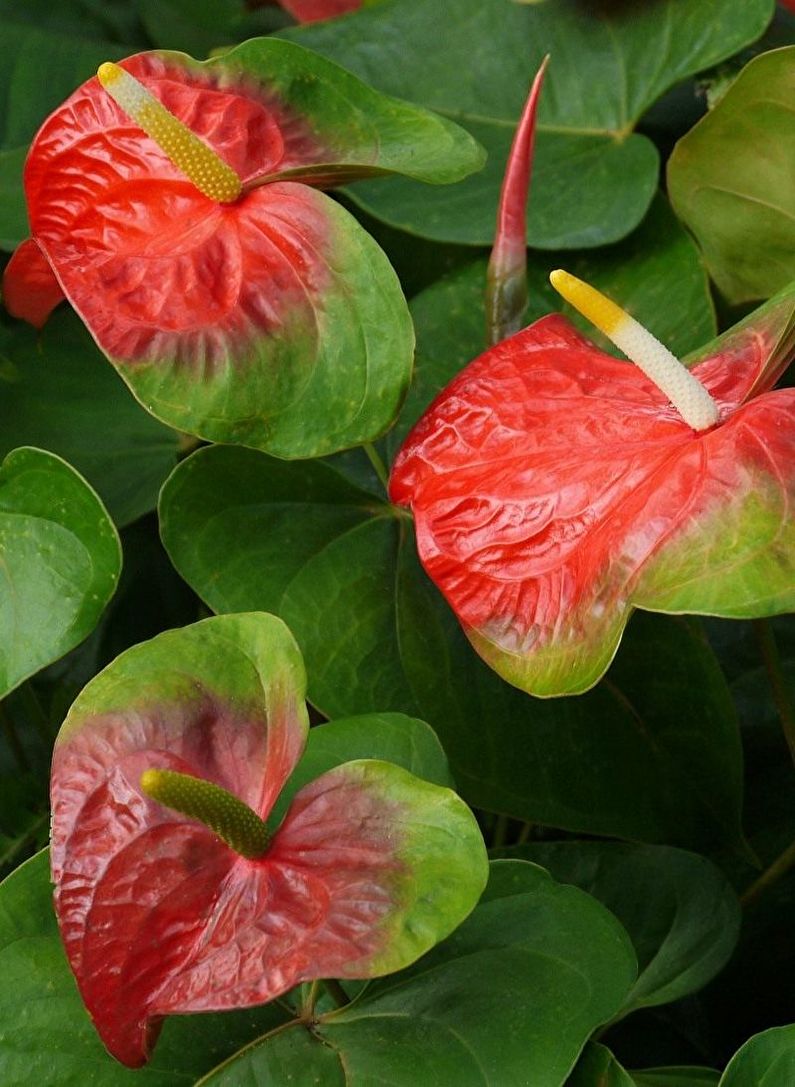
Reproduction of anthurium seeds
A positive characteristic of this method is that mass shoots can be obtained. Otherwise, such reproduction is not particularly welcomed by florists, since the process is quite lengthy and time-consuming, involving independent pollination.
Seeds are extracted from the ripe fruit of the plant, washed, treated with a 0.1% solution of potassium permanganate. Sown them in a flat container with a small layer of light structured soil or perlite. In this case, the seeds are laid out and squeezed slightly, not sprinkling on top.
The container, covered with a film, should be kept at a temperature of + 20 ... + 25C for about two weeks. After the opening of the first full leaf, the plant can be stopped. When the size of the outlet reaches 5 cm, the anthurium is transplanted into a separate pot up to 200 ml. Flowering can be observed no earlier than a year and a half.
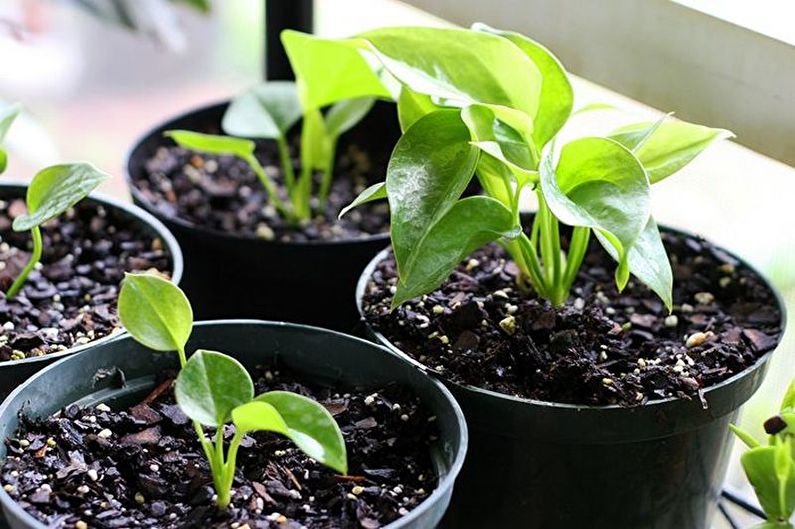
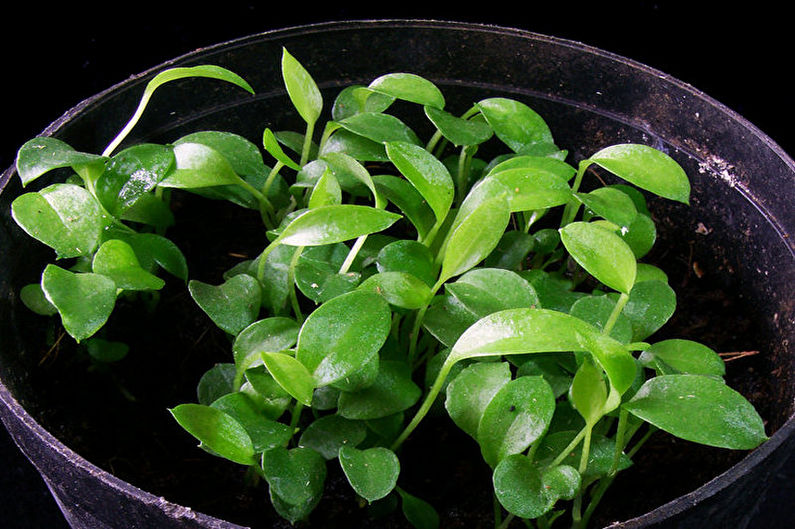
Anthurium - photo
If you want to know more about exotic anthurium, we offer you our selection of photos. The gallery contains images of different species of this plant, colors and examples of how anthurium can complement your interior. We wish you inspiration and enjoy your viewing!
